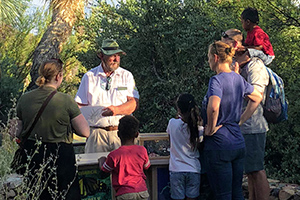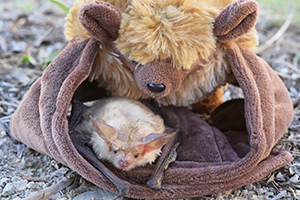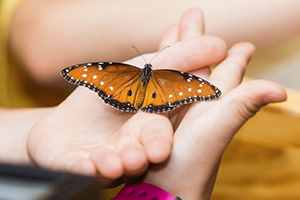Sonoran Desert Natural Events Calendar
Foresummer Drought
May, June
May
Average high: 88.8�F (31.6�C)
Average low: 57.4�F (14.1�C)
Relative humidity at 5 am: 34%
Relative humidity at 5 pm: 13%
Normal rainfall: .15” (3.8mm)
May will likely see the first day over 100�F (38�F) in the desert; most days will be clear, dry and hot. Many animals, humans included, begin to retreat to the mountains, where balmy days and cold but not freezing nights beckon.
Flora
Many species of Cactaceae bloom nocturnally, including saguaros, senitas, organ pipes, and queens-of-the-night, also known as night-blooming cereus. Delicate lavender blossoms open on desert ironwood and smoke trees. Desert spoon and soaptree yuccas put up tall, woody bloomstalks with white flowerettes; desert spoon is dioecious, with male or female flowers. Many red, trumpet-shaped flowers are blooming in mountain canyons as hummingbirds become more numerous and continue breeding; among the most spectucular blossoms are those of the coral bean.
Fauna
Female nectar-feeding bats, many of which are pregnant, migrate from Mexico into desert areas where nocturnally blooming plants are flowering. The two species are Mexican long-tongued and lesser long-nosed, the latter of which are endangered; they give birth in colonial maternity caves. Gila monster eggs, laid ten months ago, begin to hatch; the young lizards are perfectly formed miniature versions of their venomous parents and immediately fend for themselves. In mountain canyons, red-spotted toads are mating, filling the nights with their loud trills.
Nature Watching Tips for May
Balmy evenings around full moon are a great time to watch bats and moths
visit cactus flowers. Don’t forget to watch for rattlesnakes and
scorpions where you step or sit. Visit Saguaro National Park’s Tucson
Mountains or Rincon Mountains units, which are open to foot traffic in
the evenings. Call (520) 733-5158 (Tucson Mtns. unit) or (520) 733-5153
(Rincon Mtns. unit). For people in the Phoenix area, enjoy an evening
at the Desert Botanical Garden. Call (480) 481-8134 for a rundown of activities.
![]()
June
Average high: 98.5�F (36.9�C)
Average low: 67.3�F (19.6�C)
Relative humidity at 5 am: 32%
Relative humidity at 5 pm: 13%
Normal rainfall: .24” (6.1mm)
Famously hot and dry characterizes June in the desert, with lots of days over 100�F (38�C)—and a few as high as 110�F (43�C) or more—and often not a drop of moisture. The high country will remain relatively cool, in the 80s even when the mercury climbs over the century mark down below.
Flora
Saguaro cactus fruits ripen, split open, and fall to the ground; many birds, insects, and mammals feed on them. Bean pods on mesquites, palo verdes, and catclaw acacias are ripening , as are jojoba seeds. If winter or early spring rains were plentiful, sacred datura may bloom. Organ pipe cactus continue to open their pale lavender blooms.
Fauna
Many snakes bear live young or lay eggs this month, including gopher snakes, common kingsnakes, Sonoran whipsnakes, and western diamondback and tiger rattlesnakes. Days are filled with the buzzing of male cicadas, also known as “cactus dodgers,”as the insects try to attract mates. Lesser nighthawks fill the warm nights with their unique trilling calls. This is a good month to see hawks that breed in riparian areas with tall cottonwoods or sycamore trees; look for gray, black and zone-tailed hawks, and Mississippi kites.
Nature Watching Tips for June
Traditionally, many Tohono O’odham, the Desert People, make saguaro
fruit-gathering excursions beginning this month. The Desert Museum hosts
several saguaro fruit-harvesting workshops, including field trips. For
information call (520) 883-3025. During the summer months the Desert Museum
is open late on Saturday nights and offers some enjoyable evening programs.
For details call (520) 883-1380. ![]()










